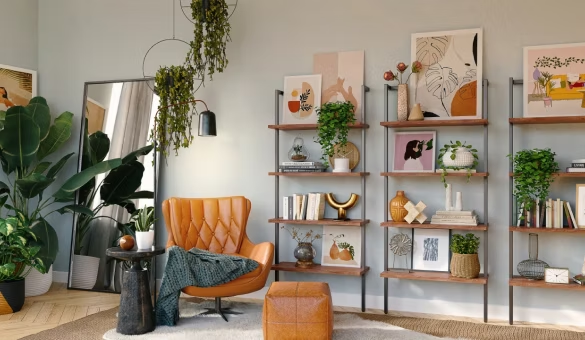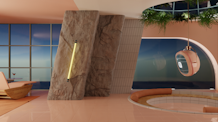Download 100+ Free Virtual Backgrounds
Find the best virtual backgrounds to customize your virtual meetings and events. Download for free and use on Livestorm, Zoom, Google Meet and more.










Explore virtual backgrounds
Customize your meetings with Livestorm
Create unique experiences for attendees with advanced customization. Change the colors, logo and background of your meeting room to match your brand!
Path leading through Swiss mountains
Palm trees on white beach near ocean
White library with shelves and stairs
Pink flamingos against green palms
Lovely Great Wall of China in autumn
Graduation celebration with hat toss
How to add a virtual background on Livestorm
1
Select any image, whether it's from our own virtual background library or a photo you took. The recommended size is 1280 by 720 pixels and JPG format.
2
Set your background before joining the event. Click on the "+" icon to upload your own virtual background. And you're ready to stream!
3
It's possible to change your background during your event. You just have to click on the Audio and Video settings button.
Try Livestorm for free
Only 3 minutes away from your most engaging webinars and meetings. Yes, it's that easy.
Build better virtual events with Livestorm's customization features
Colors & Logo
Adjust the colors & logo of the event room to match your own branding.
Room Background
Customize the background image of your room to make it more professional.
Webcam background
Blur your background or pick a virtual background for more privacy.
What is a virtual background?
Virtual background images are simulated digital environments that appear behind you when attending online events, livestreams, video calls, and virtual meetings. They can range from professional office environments to fun celebration scenes to relaxing nature imagery. Best of all, you can download free background images right here on Livestorm.
How do you add a Zoom background?
Customizing your Zoom virtual background photos is a snap. Just click the Settings button, choose Background & Filters, and pick the best Zoom virtual background to upload. If you encounter issues loading a virtual meeting background, make sure that you're using the necessary system requirements for Mac, Windows, or Linux.
Where can I download free virtual backgrounds for video conferencing?
The best place to download video conferencing backgrounds is right here on Livestorm. We offer a library of over 100 free virtual backgrounds for video calls, meetings, and conferences. You can download and use them in any virtual background tool (including ours). Make a good impression on colleagues or clients with some of our most popular images, including nature scenes, celebrations, and sports.
What are the best tools for webinar backgrounds?
Livestorm offers 100+ virtual backgrounds that you can download for free. Our video engagement platform also has blurred backgrounds, which make it easy to hide your background without replacing it completely. Plus, our video conferencing software has engagement tools, collaboration options, and analytics to streamline your virtual meetings.
Can I use these virtual backgrounds on other webinar and video conferencing software?
Yes, you can use all of the free video conference background images in our library on any platform for video meetings, calls, and events. They're compatible with Zoom, Webex, Microsoft Teams, BlueJeans, Livestorm, and others. Each of our cool virtual backgrounds is free for commercial use, and no attribution is required.
Why is the background important on video conferencing calls?
Here are some benefits of taking time to change your virtual background before your next call or meeting:
- Be more professional. With the right background, video conferencing looks more professional. You’ll make the right impression and avoid having to worry about dirty dishes or laundry hanging in the background.
- Protect your privacy. Taking video calls at home can feel very personal, especially if your desk is in your bedroom.
- Reduce distractions. Chaotic coffee shops, wandering pets, and misbehaving children can be major distractions during web conferencing calls.
- Express yourself. People only ever get to see 50% of your outfit on a video call, so your background is another way to express your personal style.
- Reflect your brand. Your background says something about the culture of your business. If you have a large bookshelf behind you, you may come across as academic and authoritative, while plants and candles can make you seem more approachable.
Virtual background vs home office background: Which is best?
If you have the time and resources to redecorate, curating your real home office background is the best option for you. You’ll have more freedom to express your style and create a comfortable, calm environment to inspire you at work.
Virtual backgrounds are best for people who have limited time and resources and people who don't have a dedicated home office. They’re also a good choice for digital nomads and people who use co-working spaces because you can use them to instantly reduce distractions in any environment.
What is the best virtual background for video conferencing?
The best virtual backgrounds for video calls are simple, stylish, and keep the focus on you. When choosing your background, look out for:
- Neutral colors
- Calming scenes
- Simple designs
What should you avoid in a background image or video?
Your virtual background should never distract from the call or be unflattering. Be careful to avoid choosing an image or a video with:
- Busy patterns
- Clashing colors
- Moving elements
- Backgrounds the same color as your clothing
What is the best background for a virtual interview?
In a virtual interview, opt for a background that represents your professional character. Scenic virtual backgrounds like landscapes, bookshelves, or sports fields will communicate your interests and may provide a talking point to break the ice in meetings. But think carefully about what your choice says about you.
What is the best background for a client call?
The best virtual background for client-facing calls is one that’s customized with your company branding. Minimalist office spaces can also be aesthetically appealing and professional.
What is the best background for an online class?
If you’re an instructor leading online classes, you should aim to minimize distractions with your virtual background. Try a blurred background or a block color, as these simple solutions will help keep the class focused on you. Avoid using novelty backgrounds during external calls and virtual events where it’s your responsibility to represent your company’s values.
Should I use a green screen for video conferencing?
Sometimes virtual backgrounds can be glitchy, especially if you’re wearing very similar colors to your background or if you need to move around a lot during your call. You can make virtual backgrounds slicker by using a green screen, which is a green backdrop that makes it easier for your video call software to differentiate between what needs to stay in shot and what’s going to have effects laid over it.
Download free virtual backgrounds for Zoom and other platforms
Related posts
How to Host a Successful Webinar: The Complete Guide
16 min. read
What Is a Panel Discussion? And How to Run One Like a Pro
14 min. read
How to Test Your Microphone and Camera: 7 Ways to Check
8 min. read
8 Best Virtual Event Platforms - The Ultimate guide [Detailed Reviews]
11 min. read
Explore our guides to build video engagement